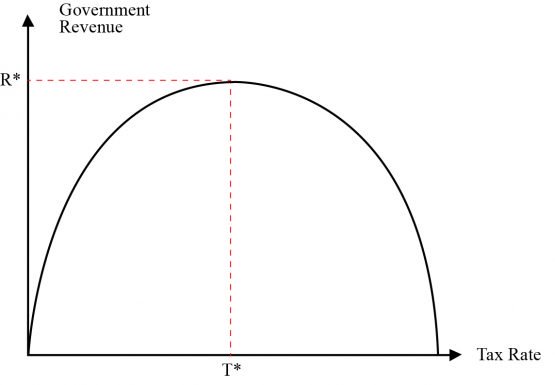When do tax rates become unaffordable?
The Minister of Finance must adopt a cautious approach.

South Africa’s economic performance and outlook has remained under pressure throughout 2017. This has led to the country’s credit rating being downgraded to “junk status” by two of the three major ratings agencies. Reasons have been cited as to why SA’s credit rating has been negatively impacted this year such as the rising debt-to-GDP ratio and political uncertainty. The rising debt-to-GDP ratio is problematic as the fiscus is increasingly negatively affected as national debt rises. This is as a result of the increased interest burden that must be paid to creditors, which reduces the amount of money available to provide for the economy and its citizens.
On November 27 2017, President Jacob Zuma announced that steps were being taken to reduce the R40 billion budget deficit by reducing expenditure by R25 billion and increasing revenue by R15 billion. South Africa’s current tax brackets are listed in table 1 and the tax thresholds are listed in table 2:
Table 1


In 2016/2017, it was estimated that approximately 1.7 million taxpayers contribute 78% of all income tax collected. This is 35% of an approximately 4.8 million assessed personal income tax payers. If an increase in taxes is proposed, whether directly or indirectly, these taxes find their way to the consumer. Currently, the South African tax base is too dependent on too few individuals.
In a growing economy, the tax base would be expanded as a result of more people being employed and hence driving economic growth. Unfortunately, although that remains the long-term hope, in the short term it is more likely to come from raising taxes from taxpayers who are the higher income earners.
According to 21st Century, the median total guaranteed package of a formal sector employee is R19 955 per month. Assuming the whole salary is subject to personal income tax, the median salary employee would pay R2 786 per month in personal income taxes (14%). This seems fairly low, however, it does not take into account of a number of other taxes that consumer must pay with after tax earnings such as value-added tax (VAT), rates and taxes on home owners to name just two. Many taxpayers also currently provide or supplement their own services that citizens wish would be provided for by government such as adequate healthcare, pension and education. Using a basic example where the median salary employee provided their own medical cover, pension and had one child at school, they could face costs such as those detailed in table 3:


Adding the costs in table 3 to the median salary earner’s personal income tax figure of R2 786 gives a total of R9 347. This yields an effective tax rate of 47%. This effective tax rate excludes other forms of taxes such as VAT, rates and taxes on homes, fuel levies, toll roads, among others. When all additional taxes are considered and adding all of these figures together would mean that the median formal sector salary earner (assuming the cost profile above) faces an effective tax rate significantly above 50%. This is a significant portion of an employee’s income before considering other personal costs such as housing, transport and groceries, for example. This assessment assumes that free and adequate medical care, pension and school fees are provided for by the government – as in most developed countries. It may seem unrealistic given current economic circumstances but it should remain the goal of government to provide such services in the long run.
The 2017/2018 budget speech will reveal where the additional R15 billion in revenue will be sourced from. If the tax ultimately finds its way on to the consumer (directly or indirectly), care should be taken not to overtax the consumer – as this can ultimately lead to a reduction in tax revenue collected as individuals find ways around paying taxes. When the tax burden becomes unaffordable because the consumer ends up with too little net income, the tax payer looks to ways of not paying taxes. The Laffer Curve in figure 4 illustrates how taxes rise as the tax rate rises to an optimal point before reducing once more as the tax rate exceeds the optimum point:

The theory behind the Laffer Curve above formed the basis of former US president Ronald Reagan’s economic plan when he implemented one of the largest tax cuts in United States history. This adds further credence to the caution that must be taken by the Minister of Finance when deciding how the additional R15 billion in revenues should be raised. If the tax base is in fact already overtaxed, an increase in the taxes levied on consumers could lead to a further reduction in the total revenue collected.
Bryden Morton is executive director and Chris Blair is CEO: Leadership & Sustainability, at 21st Century.
Brought to you by Moneyweb
For more news your way, follow The Citizen on Facebook and Twitter.
For more news your way
Download our app and read this and other great stories on the move. Available for Android and iOS.





